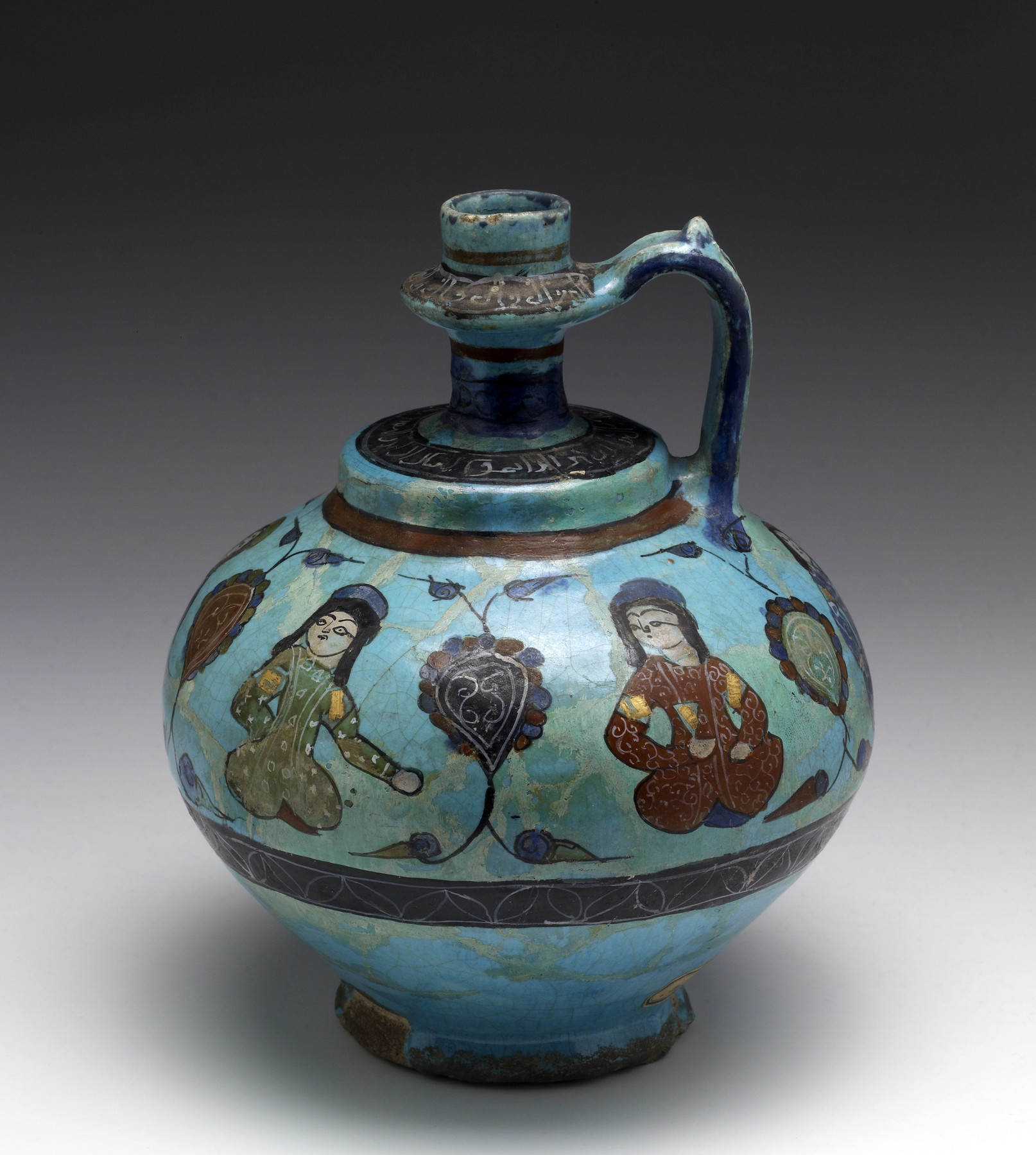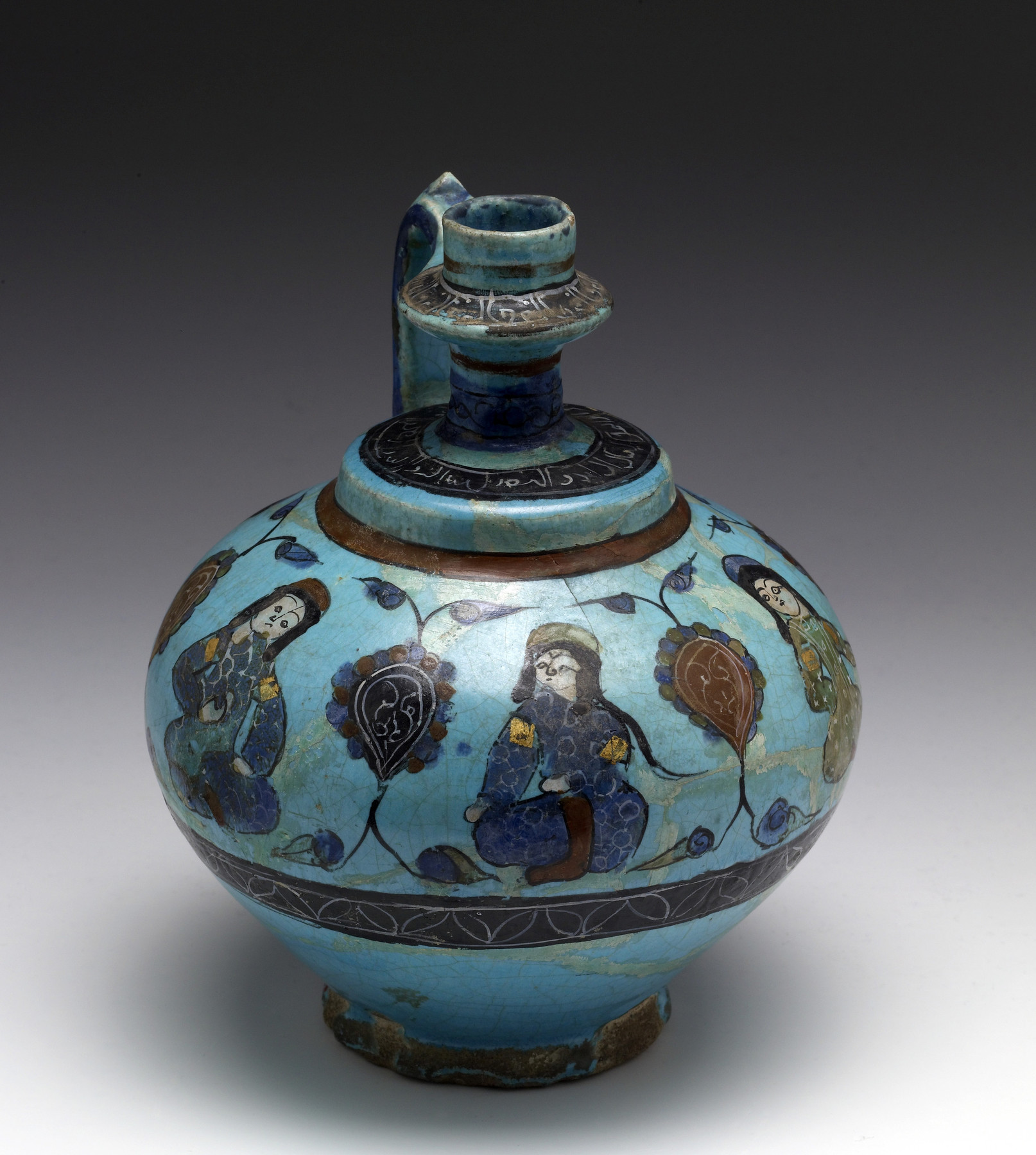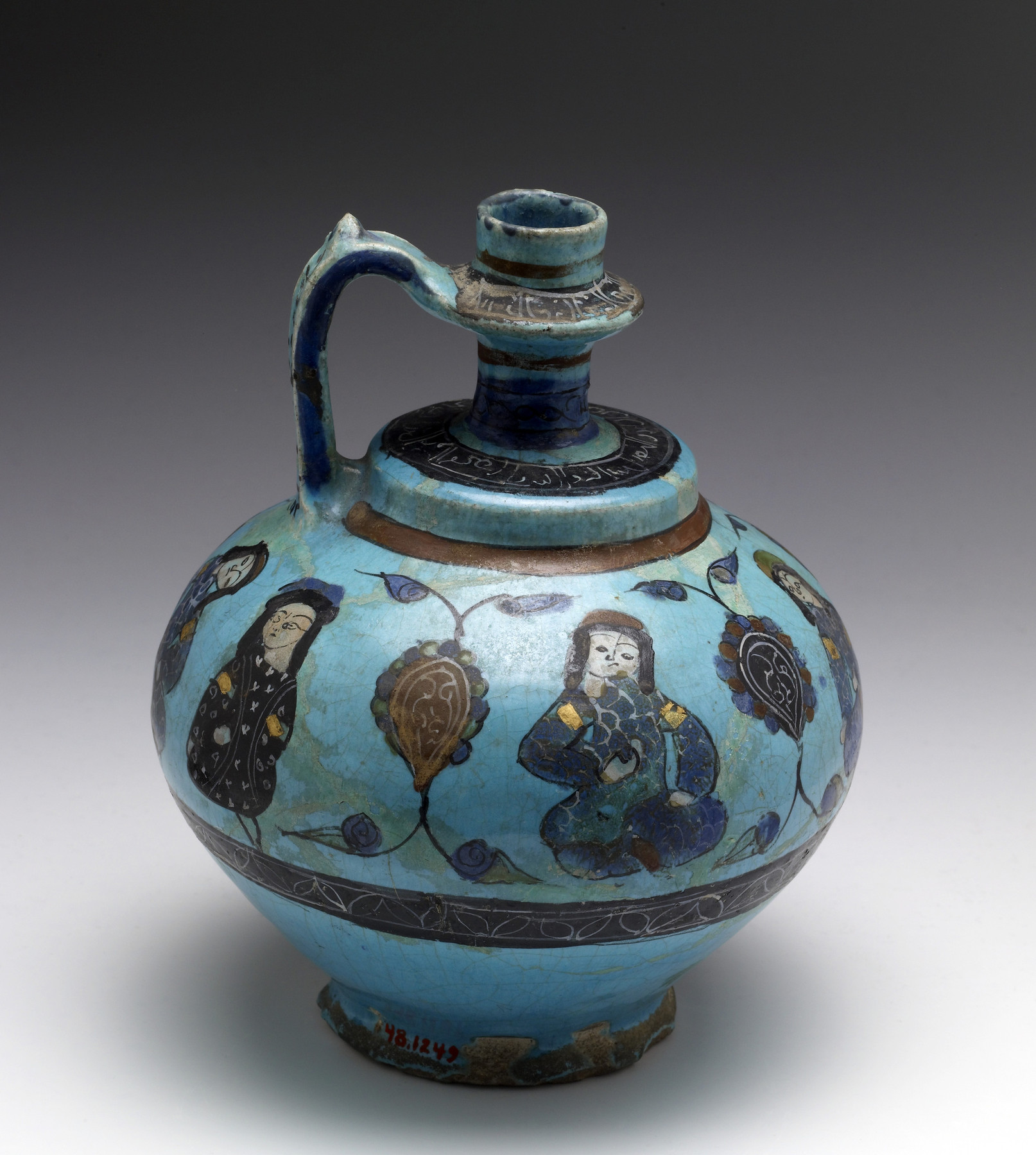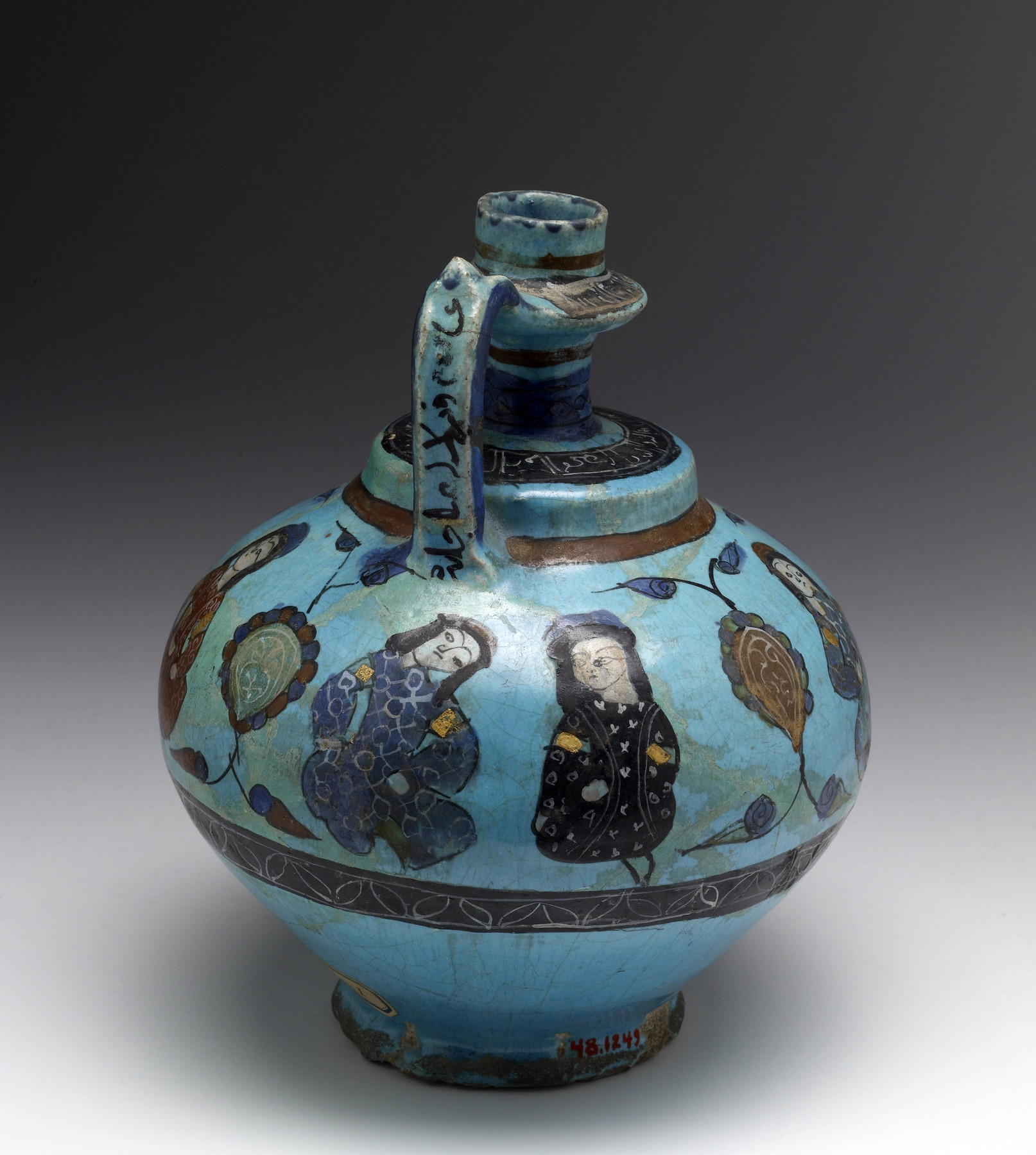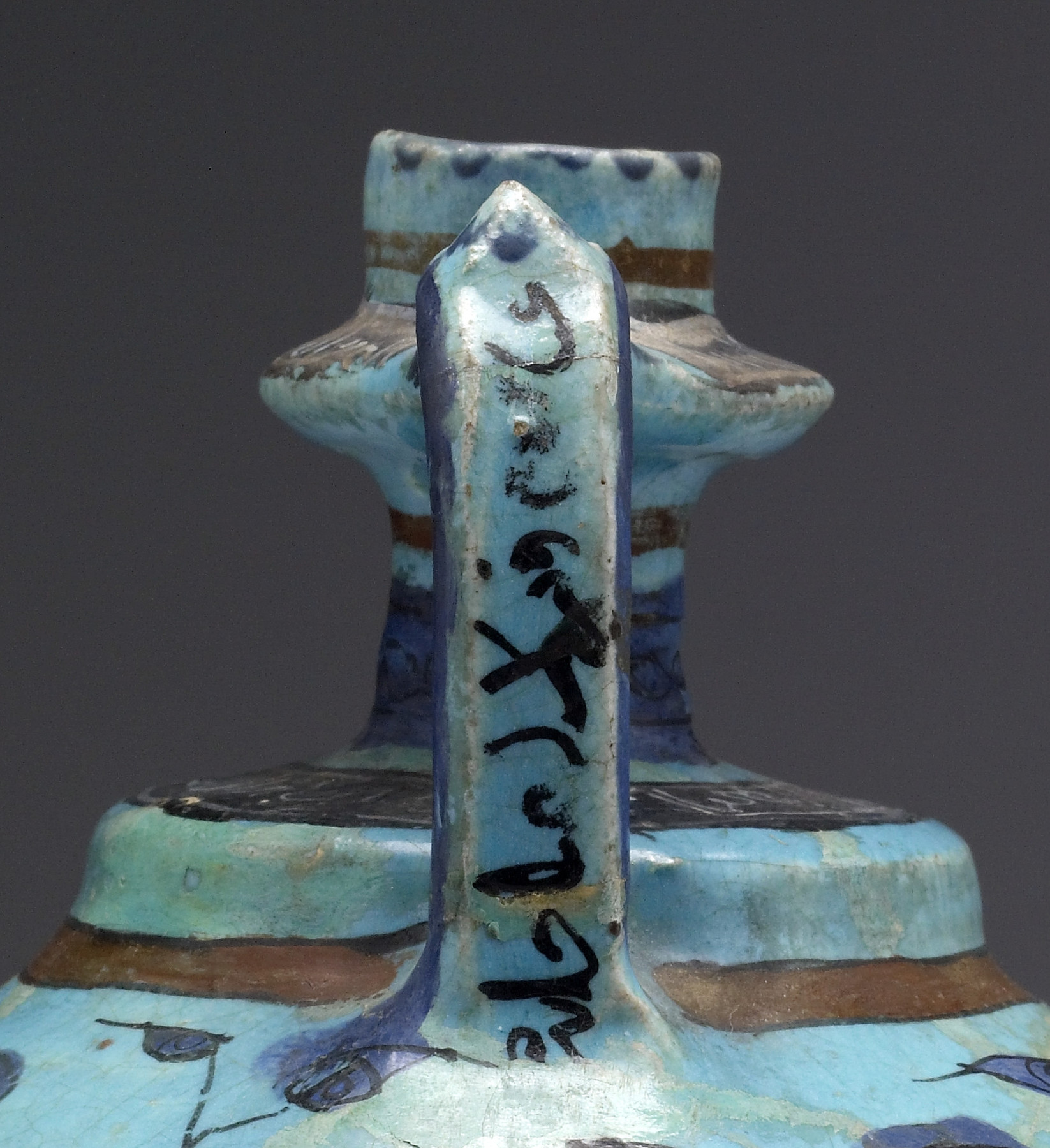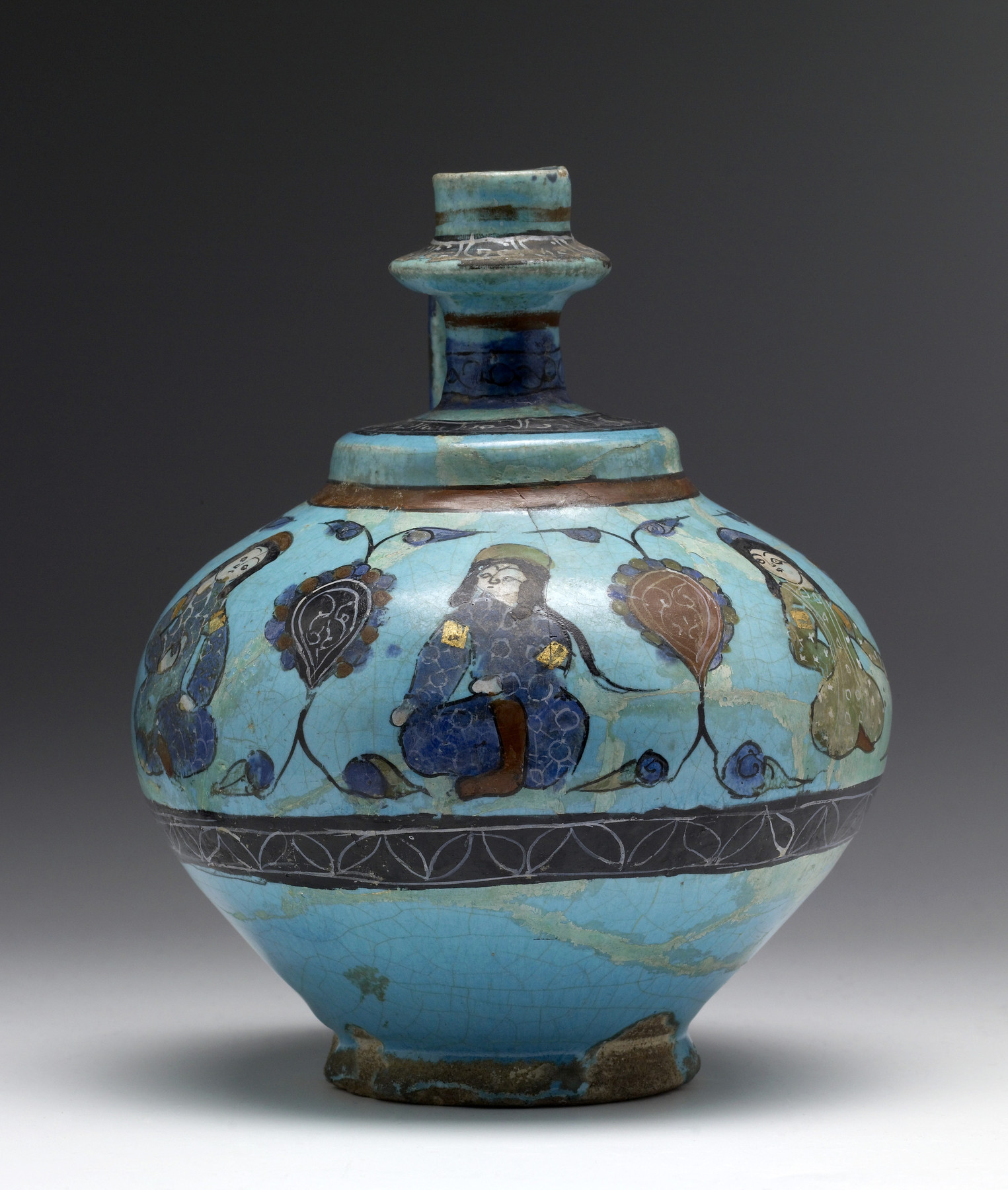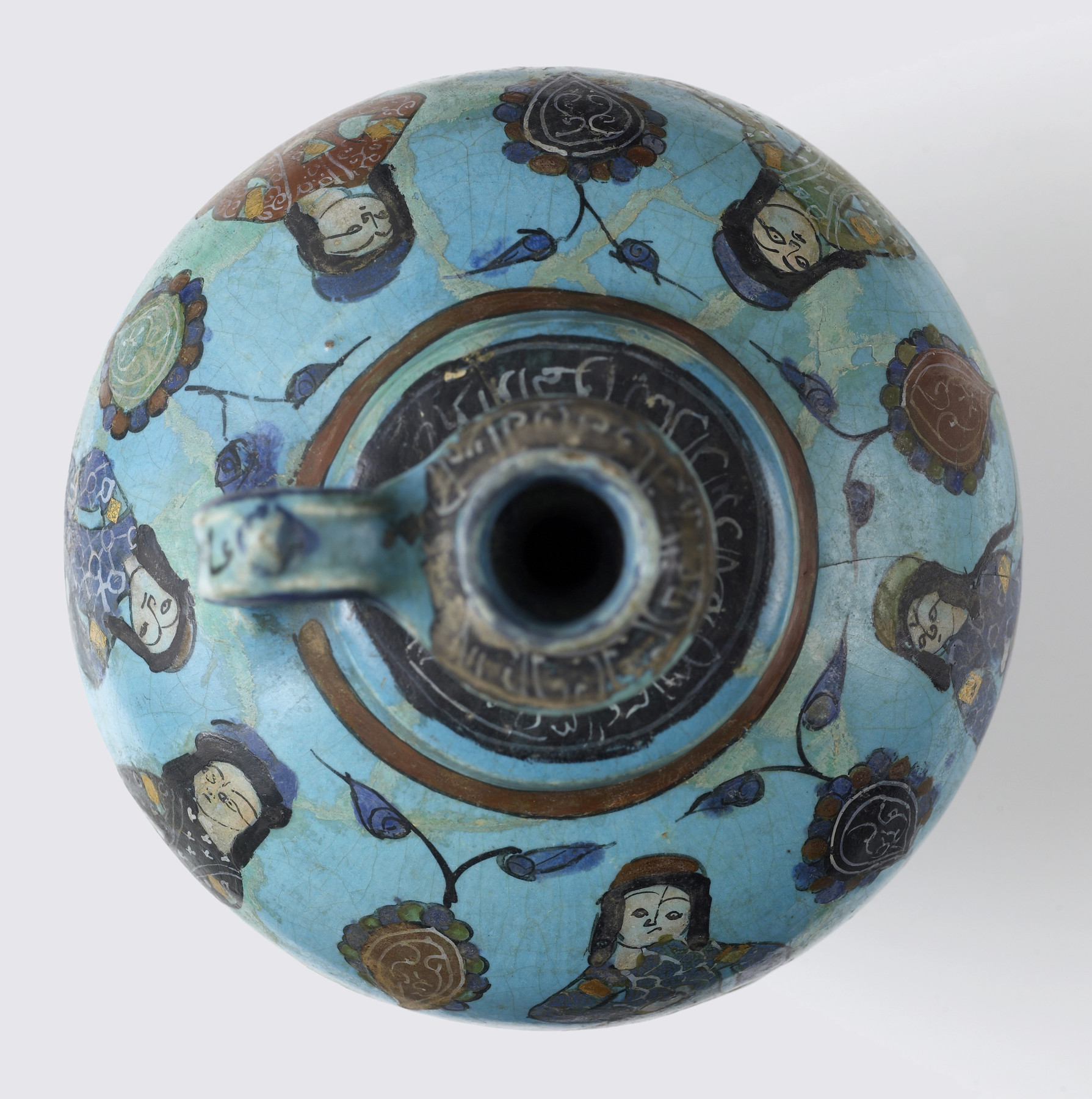Jug with Seated Persons
Mina’i is a modern collectors’ term for ceramics made in Iran during the late 12th to early 13th centuries. The term mina’i, translates as “enamelled” in Persian, designating the colored glass pigments used to paint detailed figural decoration on vessels or tiles, which were then fixed on the ceramic base by multiple firings. The use of a wide range of colors, including turquoise, red, green, purple, and black, also led these types of ceramics to be called by the Persian term “haft rang,” or “seven colors.”
Mina’i ware scenes often depict courtly pursuits, such as feasting, fighting, or poetry and music performances. These colorful compositions created complex narrative scenes which paralleled manuscript painting. These colorful compositions created complex narrative scenes which paralleled manuscript painting. This footed jug’s exterior features a pattern of seated figures. Each figure is separated by a stylized floral motif that alludes to a garden environment. A band of geometric leaves marks the lower register, and a loose inscription encircles the neck of the jug.
Provenance
Provenance (from the French provenir, 'to come from/forth') is the chronology of the ownership, custody, or location of a historical object.
Dikran Kelekian, Constantinople and Paris, [date of acquisition unknown], by purchase [as found at Rhadjes]; Henry Walters, Baltimore, 1914, by purchase; Walters Art Museum, 1931, by bequest.
Measurements
H: 6 5/16 × Diam: 5 1/4 in. (16 × 13.3 cm)
Credit Line
Acquired by Henry Walters, 1914
Location in Museum
Not on view
Accession Number
In libraries, galleries, museums, and archives, an accession number is a unique identifier assigned to each object in the collection.
In libraries, galleries, museums, and archives, an accession number is a unique identifier assigned to each object in the collection.
48.1249

